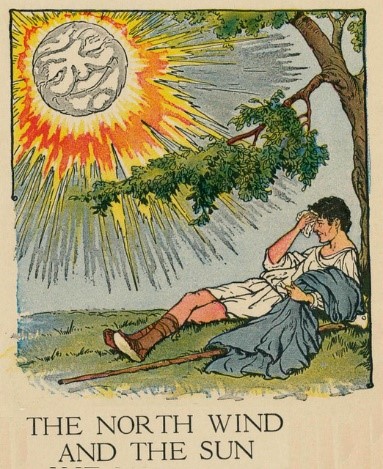Two weeks ago I was asked by a local newspaper to offer up a fifty word summary on the value of being happy which was to celebrate the International Day of Happiness on the 20th March established by the United Nations.
It was quite a challenge and in this blog I want to expand my thinking and encourage you to consider your own assessment of how you experience being happy? For me, this picture represents a state of contentment and happiness in spite of the danger below.

In Proverb 15: 13, it says that ‘a happy heart makes the face cheerful, but heartache crushes the spirit’ (NIV). What then, we may ask, makes for a happy heart and why does it show on our faces? I think we all know why heartache crushes the spirit!
Everybody wants to find and maintain a satisfactory level of happiness in all our relationships and experiences so avoiding sorrow and sadness.
Many national governments and local agencies recognise the importance of people being happy. It may be the case that such an initiative of having an international day of happiness, is due in part to the avalanche of unhappiness we experience and are exposed to daily in the media and at large.
The definition of one person’s happiness will be quite different for another. In defining happiness I think it is to experience feelings that are temporal and can represent a person’s characteristic but is definitely not dependent on particular happenings. The illusive state of happiness is always challenged by the realities of human existence in all its forms. However, I do believe that a process of ‘giving and receiving’ has a big part to play in finding and experiencing happiness.
The comedian Ken Dodd created a mythical band of ‘Diddy Men’ who had their own tickling sticks, with the intention of making people laugh and feel happy. Ken recorded a popular song Happiness that represented his life’s work and character. In his gigs that often lasted for many hours he would share a joke for his audience to receive and enjoy who in turn showed their appreciation by laughing and clapping. This ‘giving and receiving’ benefitted both parties and resulted in happy energy, laughter and appreciation.
I have heard it said by many, that their happiness comes from being able to help people in differing ways. This formula of giving out to others enables us to receive back, which gives us a feeling of contentment and happiness in ourselves and in the happenings we incur in life.
I also think that to be happy is very much akin to being kind which can transform us into an attitude of thankfulness for life and living. There is an old saying: ‘be thankful for small mercies,’ which represents a grateful outlook on life that can produce a happy output which aids our general wellbeing body, mind and spirit. When we are thankful and experience a good measure of contentment then it firms up an inner joy and peace that is not dependent on good happenings around us.
Recently, I was reading some comments shared by Luke Shaw, a professional footballer, who was speaking about his relationship with his manger Ole Gunnar Solskjaer. He expressed how happy he was because of the confidence that his manager had placed in him. This in turn helped him to enjoy his football with increased confidence and happiness in the games he played in.
There are a number of ‘happiness indicators’ that are available online which can help us assess what levels of happiness we are at and with a measure of reasoning behind them. For a moment consider my own simple ‘happiness indicator’ and on a scale of 0 to 10 (10 being the highest) record what makes you happy at this present time? In assessing the results, the scores will vary depending on the different seasons and circumstances we find ourselves in.
Self-acceptance (________) Money (________) Relationships (________) Work (________) Love (________) Voluntary work (________) Faith in God, philosophy or no God (________) Other (________)
For me my anchor and faith in God gives me a sense of thankfulness and a quiet joy and peace. It gives me a strength within my inner core that acts as a basis for my temporal and continuous happiness.
In the Beatitudes it outlines certain experiences we may be facing. It then encourages us to take hold of different attitudes that will bring change to those life circumstances we face. In considering the fifth beatitude, ‘Blessed (happy) are the merciful, for they will be shown mercy’, it highlights that in our giving of mercy (offering kindness and forgiveness) to others we will in turn be shown mercy that will make us feel happy.
As we draw to a close I would like to go back to those fifty words as mentioned at the beginning.
“To be happy is to experience feelings that are not permanent. We can find happiness within our inner core that is independent from happenings and is reflected in our character. To ‘give and receive’ plays a big part in experiencing happiness that will be clearly seen in our cheerful faces”.

Have a happy and cheerful Easter and maybe take time to listen to Pharrell Williams song Happy and even join in the clapping!
Graham
For further reading hit the links below for the second edition (October 2020) in black and white or colour


 I visited a local supplier to purchase the new fire cement and was pleasantly surprised to find that when I was due to pay, for no apparent reason apart from being kind to me, he said that I could have it for free.
I visited a local supplier to purchase the new fire cement and was pleasantly surprised to find that when I was due to pay, for no apparent reason apart from being kind to me, he said that I could have it for free. The moral of the fable is that ‘kindness and persuasion’ as represented by the sun, is often far better than force as experienced with the North wind.
The moral of the fable is that ‘kindness and persuasion’ as represented by the sun, is often far better than force as experienced with the North wind.


